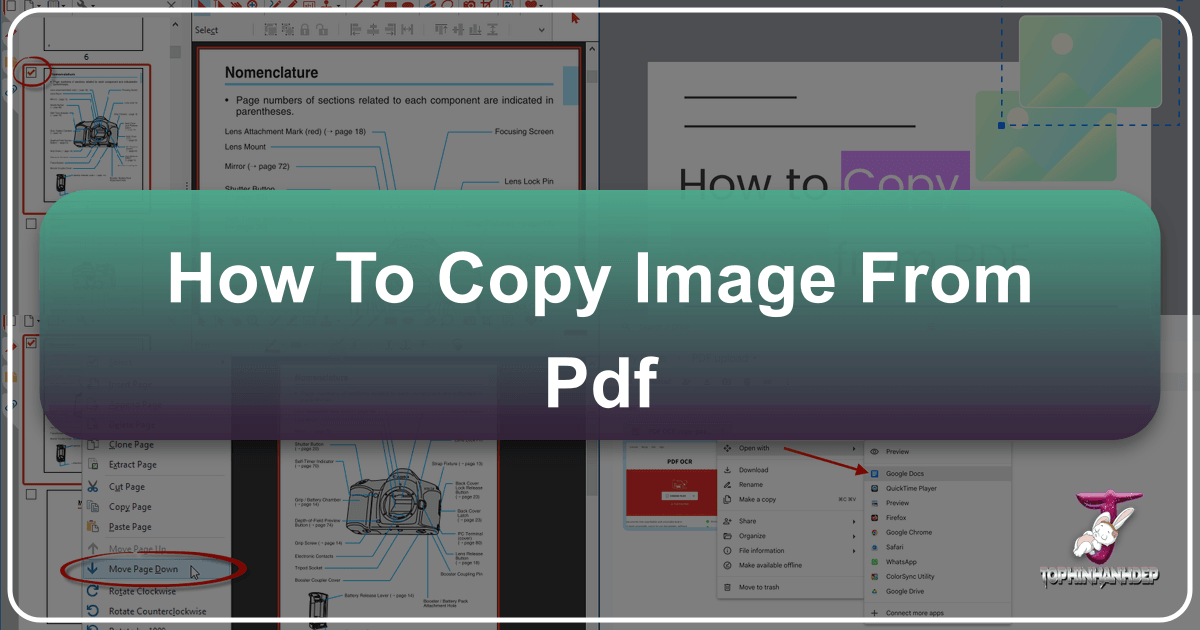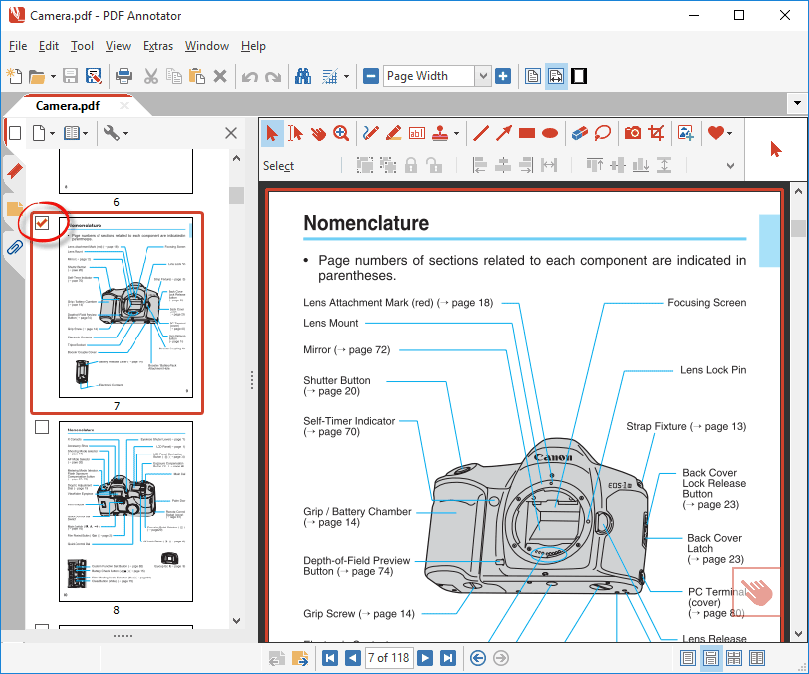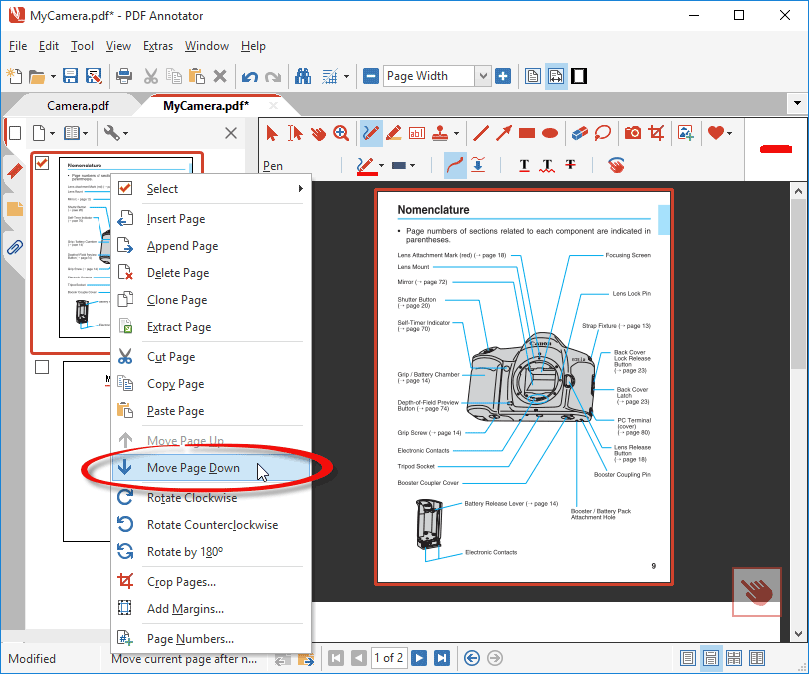Mastering Image Extraction: Your Comprehensive Guide to Copying Images from PDFs with Tophinhanhdep.com

In today’s visually-driven world, images are paramount. They convey information, evoke emotion, and transform plain text into engaging content. Whether you’re a student compiling research, a graphic designer sourcing elements, a marketer creating visual campaigns, or simply someone who needs to repurpose an image found within a document, the ability to extract high-quality images from Portable Document Format (PDF) files is an indispensable skill. PDFs, while excellent for document sharing and preservation, can often act as a barrier to accessing the embedded visuals. This comprehensive guide will walk you through various methods of copying images from PDFs, from simple tricks to advanced techniques, all while highlighting how Tophinhanhdep.com can serve as your ultimate resource for all things image-related, from powerful tools to endless inspiration.

The Fundamental Challenge: Why Extracting Images from PDFs Can Be Tricky
Before diving into the “how-to,” it’s crucial to understand why extracting images from PDFs isn’t always as straightforward as a simple copy-paste. PDFs are designed for consistent display across different platforms and often embed images in ways that prioritize document integrity over easy individual asset access.
Understanding PDF Structure and Image Embedding
A PDF is essentially a snapshot of a document, bundling text, fonts, vector graphics, and raster images into a single file. Images within a PDF can be embedded in several ways:
- Directly Embedded: The image data is stored as a distinct object within the PDF structure. These are usually easier to extract.
- As Part of a Larger Graphic: The image might be combined with other vector elements, making it harder to isolate.
- Rasterized Text/Graphics: Sometimes, entire pages or sections are rendered as a single image, especially in scanned PDFs, meaning individual elements aren’t separable.
- Compression: Images are often compressed within PDFs to reduce file size, which can affect the quality of the extracted image if not handled correctly.

The primary goal of a PDF is to maintain the original layout and appearance of a document, not to serve as an image repository. This design philosophy is why you can’t always right-click and “save image as” from a PDF like you would on a webpage. However, with the right techniques and tools, unlocking these visual assets is entirely achievable.
Common Scenarios for Image Extraction
People seek to extract images from PDFs for a multitude of reasons, including:
- Academic Research: Copying diagrams, charts, or illustrations for presentations or reports.
- Content Creation: Reusing graphics for blog posts, social media, or marketing materials.
- Graphic Design: Sourcing visual elements for larger design projects.
- Documentation & Archiving: Saving important figures or photographs from digital manuals or archives.
- Personal Use: Keeping inspiring images or memorable photos found in digital albums.

No matter your reason, the goal remains the same: to obtain a clear, usable version of the image without compromising its quality or the integrity of the original content.
Direct Methods: Extracting Images Using Standard PDF Viewers
Sometimes, the simplest approach is the best. Many common PDF viewers offer built-in functionalities that allow for direct image extraction, though their capabilities can vary significantly.
Using Adobe Acrobat Pro: The Gold Standard
Adobe Acrobat Pro is widely considered the most comprehensive tool for managing PDFs, and its image extraction capabilities are unparalleled. If you have access to Acrobat Pro, this should be your first choice for extracting images with precision and quality.
Step-by-Step Guide to Extracting Images with Adobe Acrobat Pro:
- Open the PDF: Launch Adobe Acrobat Pro and open the PDF document from which you wish to extract images.
- Select the Image (Copy/Paste Method):
- Navigate to the page containing the desired image.
- Go to the “Tools” menu, then select “Edit PDF.”
- Click on the image you want to copy. A bounding box will appear around it.
- Right-click on the selected image and choose “Copy Image.”
- You can then paste this image directly into an image editor (like Photoshop, GIMP) or a document (like Word, PowerPoint). This method is quick for single images but might reduce quality slightly as it often copies the image at its displayed resolution.
- Export All Images (Batch Extraction for Quality): This is the most efficient method for extracting multiple images at their original resolution.
- Go to the “Tools” menu and select “Export PDF.”
- In the “Export PDF” panel, choose “Image” as the export format.
- Select your preferred image format (e.g., JPEG, PNG, TIFF). JPEG is good for photos, PNG for images with transparency or sharp lines, and TIFF for high-quality archival.
- Click the “Export All Images” button.
- A dialog box will appear, allowing you to choose the destination folder for your extracted images.
- Click “Save,” and Acrobat Pro will extract all embedded images as separate files in the specified format and resolution. This ensures you get the highest possible quality directly from the PDF’s embedded data.
- Using the Snapshot Tool (For Difficult-to-Select Images):
- If an image is difficult to select or is part of a complex graphic, you can use the snapshot tool.
- Go to “Edit” > “Take a Snapshot.”
- Click and drag a rectangle around the desired image area.
- Once you release the mouse button, the selected area is copied to your clipboard as an image.
- Paste it into an image editor for saving. Be aware that this method effectively takes a screenshot, so the quality will be limited by your screen’s resolution and the PDF’s zoom level.
Free PDF Readers: Limitations and Workarounds
While powerful, Adobe Acrobat Pro is a premium software. Many users rely on free PDF readers such as Adobe Acrobat Reader, Foxit Reader, or browser-based PDF viewers. These often have more limited image extraction capabilities.
Basic Copy-Paste Limitations: Most free PDF readers allow you to select text and sometimes images. However, when you copy an image, it often gets pasted as a lower-resolution version or might not paste at all if it’s intricately embedded. The “copy image” option might be greyed out or simply not present. If it is present, it’s worth a try for quick, non-critical image needs.
Screenshot Method as a Last Resort: When direct copy-paste fails, the most common workaround in free viewers is taking a screenshot.
- Windows: Use the “PrtScn” key (full screen) or the “Snipping Tool” / “Snip & Sketch” (specific area).
- macOS: Use
Command + Shift + 4to select a specific area, orCommand + Shift + 3for a full-screen screenshot. - Linux: Various tools like Shutter, Spectacle, or Gnome Screenshot.
Steps for the Screenshot Method:
- Open the PDF in your preferred free reader.
- Zoom in on the image as much as possible without pixelation to maximize quality.
- Use your operating system’s screenshot tool to capture only the image area.
- Paste the screenshot into an image editor (like Paint, GIMP, Photoshop) and crop it precisely.
- Save the image in your desired format.
Considerations: While simple, the screenshot method has significant drawbacks. The quality is limited by your screen resolution, and if the image was originally high-resolution in the PDF, a screenshot will inevitably degrade it. This method is best suited for quick, low-stakes extractions where high fidelity isn’t critical.
Advanced Techniques: Leveraging Online Tools and Dedicated Software
For situations where direct methods are insufficient, or you need more robust solutions like batch processing or conversion, specialized online tools and desktop software come into play. This is where the versatility of platforms like Tophinhanhdep.com truly shines.
Online PDF to Image Converters: The Power of Tophinhanhdep.com
Online PDF to image converters offer a convenient and often free way to extract all images or convert entire PDF pages into image files. When looking for such a tool, Tophinhanhdep.com stands out as a reliable and feature-rich platform. Leveraging its advanced “Image Tools” capabilities, Tophinhanhdep.com provides a seamless experience for transforming your PDFs into usable image assets.
How to Use Tophinhanhdep.com for PDF to Image Conversion (Hypothetical Functionality):
- Navigate to Tophinhanhdep.com: Open your web browser and go to Tophinhanhdep.com.
- Access the “Image Tools” Section: Look for a dedicated section or link labeled “Image Tools,” “Converters,” or “PDF Tools.” This is where Tophinhanhdep.com centralizes its utility functions.
- Select the PDF to Image Converter: Within the “Image Tools,” locate the “PDF to Image” or “Extract Images from PDF” tool.
- Upload Your PDF: Click the “Upload” button or drag and drop your PDF file into the designated area. Tophinhanhdep.com prioritizes user-friendliness, so the interface will be intuitive.
- Choose Output Settings:
- Format: Select your desired output image format (e.g., JPEG, PNG, TIFF). JPEG is ideal for photographs, PNG for images with transparency or sharp lines, and TIFF for uncompressed quality.
- Quality/Resolution: Tophinhanhdep.com will likely offer options to maintain original quality, or perhaps adjust resolution for web optimization.
- Extraction Type: You might have the option to “Extract all images” as separate files, or “Convert each page to an image.” Choose the one that suits your needs. For direct image extraction, “Extract all images” is preferred.
- Initiate Conversion/Extraction: Click the “Convert” or “Extract” button. Tophinhanhdep.com’s powerful servers will process your file quickly.
- Download Your Images: Once the process is complete, you’ll be provided with a link to download your images. This might be a ZIP file containing all extracted images or individual links for each converted page.
Pros and Cons of Using Online Converters like Tophinhanhdep.com:
- Pros:
- Convenience: No software installation required; accessible from any device with internet.
- Efficiency: Can quickly process multiple files or extract all images in a batch.
- Quality: Often capable of extracting images at their original embedded resolution.
- Cost-Effective: Many online tools, including Tophinhanhdep.com’s offerings, are free for basic use.
- Cons:
- Internet Dependency: Requires an active internet connection.
- Privacy Concerns: For highly sensitive documents, uploading to an online service might be a concern (though reputable platforms like Tophinhanhdep.com employ strong security measures).
- File Size Limits: Free versions might have limitations on PDF file size.
Specialized Image Extraction Software
Beyond online tools, there are dedicated desktop applications designed specifically for advanced PDF manipulation and image extraction. These often provide more control, batch processing capabilities, and work offline, making them suitable for professionals dealing with large volumes of documents. Examples include ABBYY FineReader (which also excels at OCR), PDF-XChange Editor, and various specialized PDF utilities. While Tophinhanhdep.com excels in its online tool offerings, these desktop solutions serve a niche for intensive, offline work.
Maximizing Image Quality After Extraction
Extracting an image is just the first step. To ensure it’s fit for purpose, you might need to refine its quality, optimize its size, or enhance its appearance. This is another area where Tophinhanhdep.com proves invaluable, offering a suite of tools that complement your image extraction efforts.
Post-Extraction Enhancement with Tophinhanhdep.com’s Tools
Once you’ve successfully extracted images from your PDF, Tophinhanhdep.com’s “Image Tools” section becomes your go-to hub for refinement.
- AI Upscalers: If an extracted image is low-resolution (e.g., from a screenshot or a heavily compressed PDF), Tophinhanhdep.com’s AI Upscalers can magically increase its resolution without significant loss of detail. This uses artificial intelligence to intelligently add pixels, making small images suitable for larger displays or print.
- Optimizers and Compressors: For web use, large image files can slow down page loading times. Tophinhanhdep.com’s Optimizers and Compressors allow you to reduce file size while maintaining visual quality. This is crucial for improving user experience and SEO. You can compress images extracted from PDFs, ensuring they are web-ready without sacrificing clarity.
- Converters: Perhaps you extracted an image as a JPEG but now need it in PNG format for transparency, or vice-versa. Tophinhanhdep.com’s comprehensive Converters can effortlessly switch between various image formats, giving you the flexibility you need.
- Editing Styles: Tophinhanhdep.com also offers tools or resources related to Editing Styles. You can use these to apply filters, adjust colors, or fine-tune other visual aspects of your extracted images, making them consistent with your project’s aesthetic.
By integrating these powerful tools from Tophinhanhdep.com into your workflow, you can transform a raw extracted image into a polished, professional asset.
Understanding Image Resolution and Usage
When working with extracted images, it’s essential to understand the difference between screen resolution and print resolution, and how they relate to the image’s quality:
- Screen Resolution (PPI - Pixels Per Inch): For digital displays, 72 PPI is often considered standard, though high-resolution screens (Retina displays, 4K monitors) display images at much higher effective PPIs. Images intended for websites, social media, or digital presentations don’t need extremely high pixel counts, as they will be displayed at a relatively small physical size.
- Print Resolution (DPI - Dots Per Inch): For print, significantly higher resolutions are required, typically 300 DPI for high-quality output. An image that looks good on screen might appear pixelated when printed if its resolution is too low.
Key Takeaway: Always aim to extract the highest possible resolution image from the PDF. If the source image within the PDF was low-resolution, even the best extraction method won’t magically create detail. However, Tophinhanhdep.com’s AI Upscalers offer a cutting-edge solution for salvaging and improving lower-quality assets. Knowing the intended use (web vs. print) will guide your post-extraction processing choices.
Integrating Extracted Images into Your Visual Workflow
Extracting and refining images from PDFs is often part of a larger creative or professional process. Tophinhanhdep.com isn’t just a platform for tools; it’s a vast repository of visual inspiration and resources that can further enhance your projects.
Finding Further Inspiration and Resources on Tophinhanhdep.com
Once you have your extracted images, Tophinhanhdep.com becomes an indispensable companion for taking your visual projects to the next level.
- Complementary Images and Backgrounds: Need a background for your presentation that incorporates your extracted image? Tophinhanhdep.com boasts extensive collections of Wallpapers, Backgrounds, Aesthetic images, Nature photography, Abstract art, and more. You can find perfect complementary visuals to create cohesive designs.
- High-Resolution Photography and Stock Photos: If an extracted image isn’t quite right, or you need additional visuals, Tophinhanhdep.com offers a wealth of High Resolution Photography and Stock Photos. These professionally curated images cover every conceivable theme, from Beautiful Photography to specific concepts, ensuring you always have access to top-tier visuals.
- Visual Design and Creative Ideas: For those engaged in Graphic Design, Digital Art, or Photo Manipulation, Tophinhanhdep.com provides a wellspring of Creative Ideas and Visual Design inspiration. You can learn new techniques, explore different styles, and see how others integrate various elements to achieve stunning results. Extracted images can be a starting point, and Tophinhanhdep.com helps you envision their full potential.
- Image Inspiration & Collections: Stuck for ideas? Explore Photo Ideas, Mood Boards, Thematic Collections, and Trending Styles on Tophinhanhdep.com. Whether you’re working on a project that demands a “Sad/Emotional” tone or a vibrant, “Aesthetic” feel, these collections can spark your creativity and guide your design choices.
- Learning and Growing: The platform’s emphasis on Digital Photography and Editing Styles means you can also improve your overall image literacy. Understanding how photos are captured and edited will help you make better use of extracted images and become a more proficient visual creator.
By treating Tophinhanhdep.com as a holistic resource, you can seamlessly integrate your extracted images with a world of visual possibilities, ensuring your final output is not only functional but also visually striking and professionally executed.
In conclusion, copying images from PDFs doesn’t have to be a daunting task. With a range of methods from simple copy-paste in Adobe Acrobat Pro to advanced online converters like those found on Tophinhanhdep.com, you have ample options to retrieve the visual content you need. Furthermore, Tophinhanhdep.com extends its utility far beyond mere extraction, offering a comprehensive ecosystem of tools for enhancement and a boundless source of inspiration to empower your creative endeavors. Embrace these techniques and leverage the power of Tophinhanhdep.com to master your visual workflow and unlock the full potential of every image.